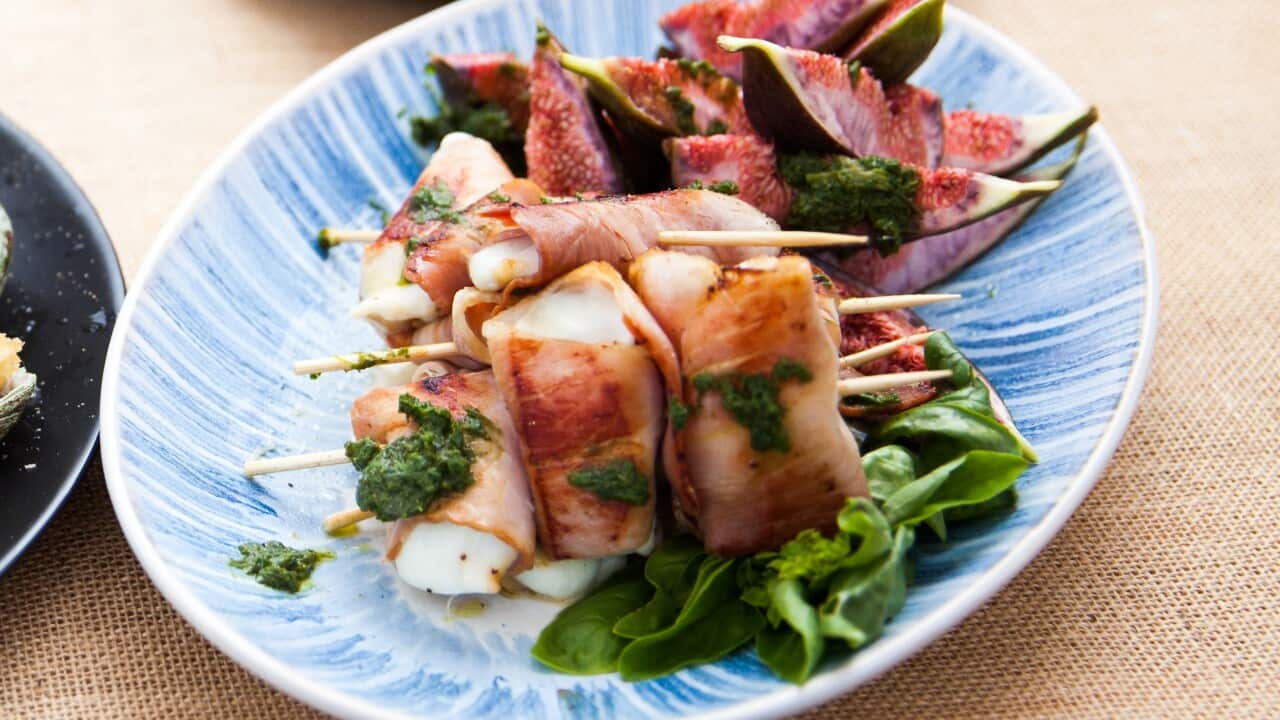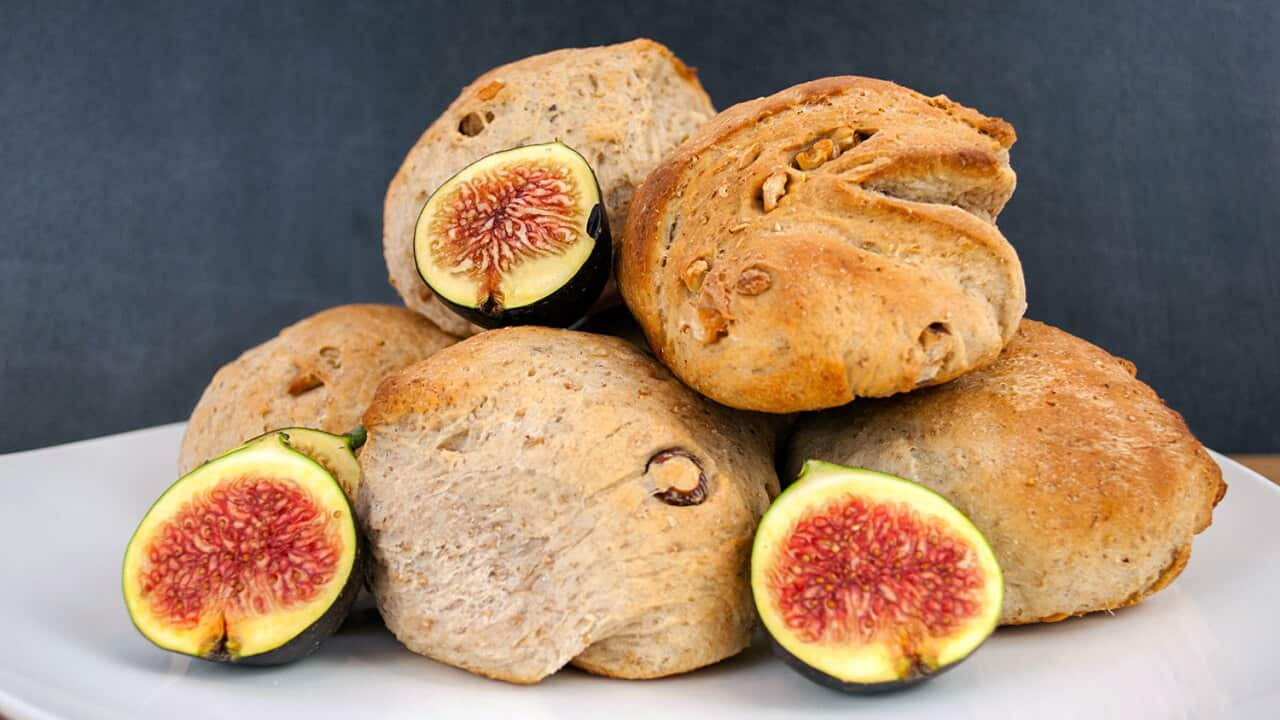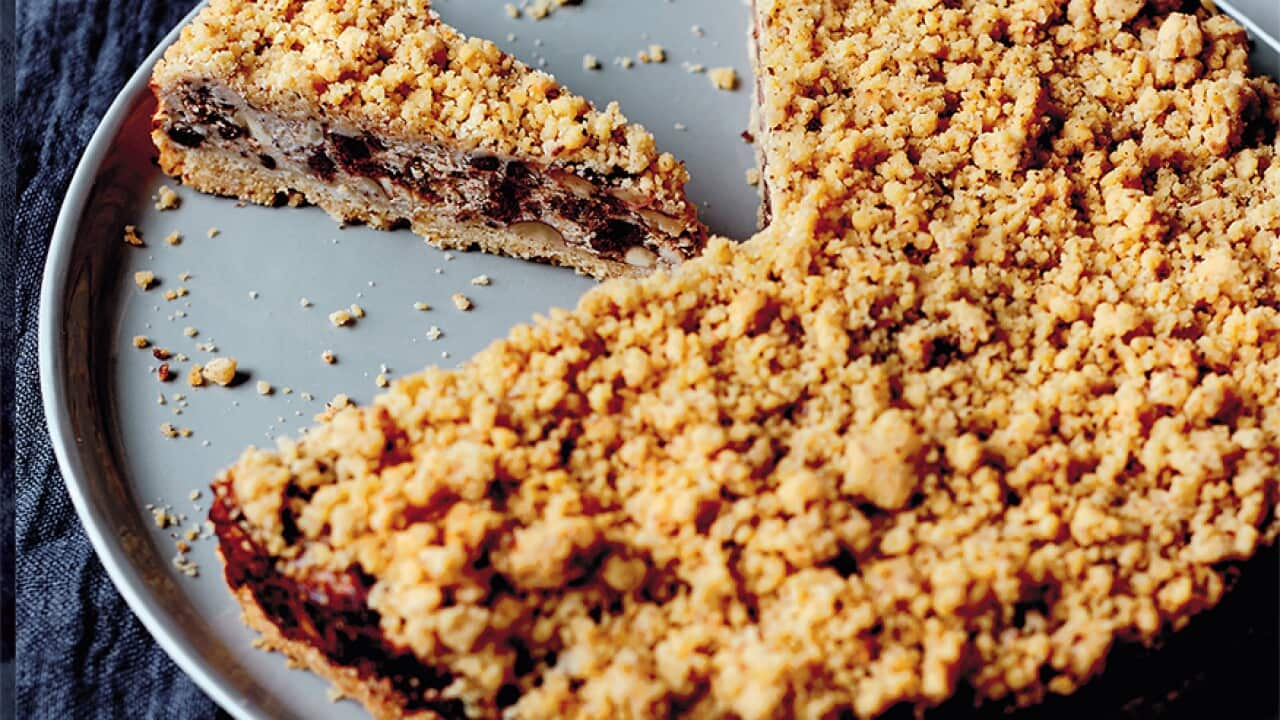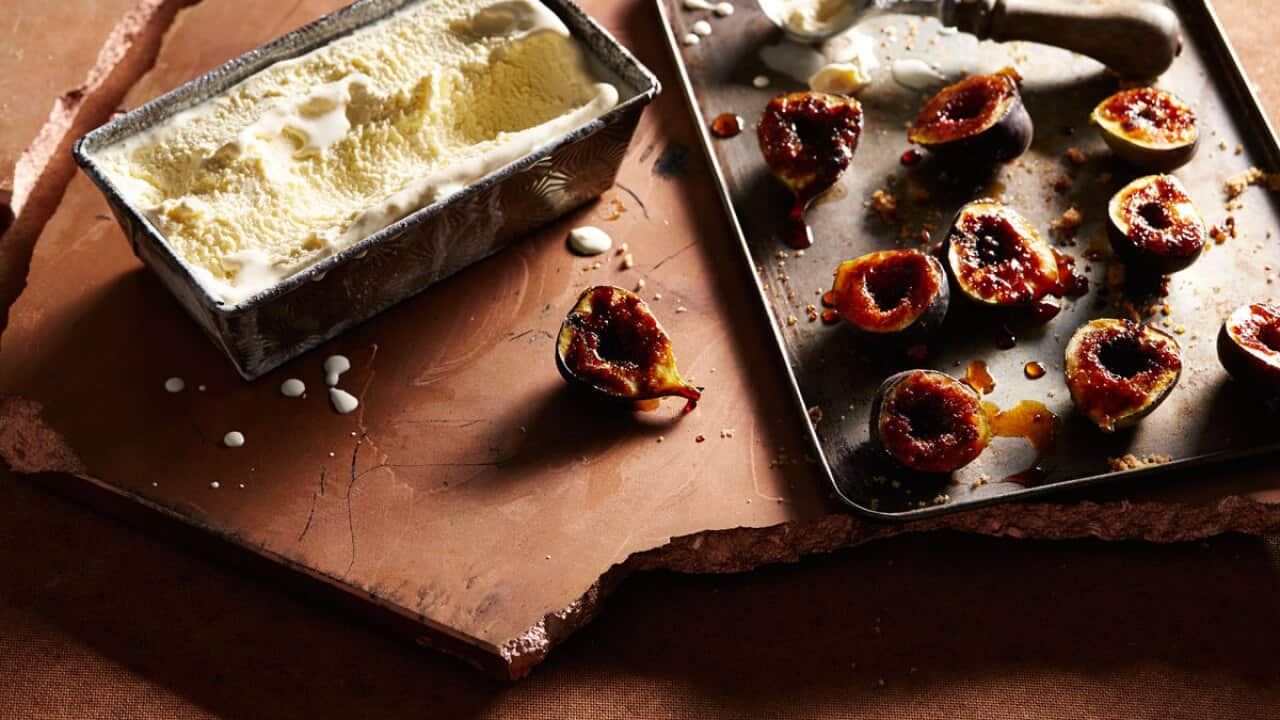Fun party fact: you may have just eaten a wasp corpse with your blue cheese. That is, if you've just eaten with your cheese (which you ).
Before you get completely grossed out, rest assured it's only nature shocking us with her ingenuity once again. See, figs aren't technically a fruit, but rather an inverted flower. So they bloom on the inside of what's called the syconium. This means that all of the reproductive parts of the plant are located inside the pod.
Now, the flower needs to be pollinated in order to reproduce, but how to get the pollen inside the fig? Recipe
Recipe

Smashed figs with blue cheese Source: Prue Ruscoe
Crunchy bits and all
Enter, the accommodating fig wasp. The tiny female wasp enters the edible fig and lays her eggs. She then dies, hence the wasp-inside-fig story. It's a mutually beneficial arrangement that has evolved over thousands of years. There are over 900 species of fig wasps, responsible for pollinating the world's 900 species of figs. The fig gets pollinated and the fig wasp has a safe place for its larva to feed and grow.
READ MORE

The seasonal cook: figs
Before you fret about all the times you've crunched into a fig, rest assured that the crunchy bits are fig seeds, not insect corpses. The fig conveniently contains ficin, a powerful enzyme, that mostly digests the 1.5mm insect. This process becomes part of the flavour and finish of the ripened fruit, but there's technically no wasp left in your fig.
It might help (or not) to know that we essentially eat insects all the time
Would you like insects with your order?
If you're still feeling squeamish about munching on insects, it might help (or not) to know that we essentially eat insects all the time. The US Food and Drug Administration's outlines acceptable levels of food contaminants and defects. Some of the acceptable insect levels include:
- Five or more whole or equivalent insects per 100 grams of apple butter. This doesn't include mites, aphids, thrips, or scale insects, which presumably are allowed over and above the five.
- Five or more dead insects per 100 grams of chopped dates.
- One or more maggots per 250ml of canned citrus fruit juice.
- An average of 2,500 aphids is acceptable in 10 grams of hops.
That's a lot of acceptable insect consumption! There are no such guidelines in Australia, just a vague requirement in our that all food sold in Australia be "safe and suitable".
A little gratitude, please
Rather than freak out about the odd wasp in our fig, it might pay to be grateful. "Frankly, I think it's odd how much people separate food from nature," Matthew Evans, host of and author of On Eating Meat, tells SBS Food. "Like, if you don't have aphids in your Brussels sprouts, that means you've probably got pesticides. It would be a bad thing if you weren't eating insects on a regular basis."
"Frankly, I think it's odd how much people separate food from nature." - Matthew Evans
To make the most of their luscious wasp-enhanced flavour, Matthew recommends pairing your figs with creamy blue cheese, wrapping them in prosciutto and heating them gently under the grill.
"You've got the creaminess of the cheese, the sweetness of the figs and the saltiness of the prosciutto," he says. "Giving figs a little heat brings out their flavour, warming them back to being plucked perfectly ripe in the sunshine and eaten straightaway."
#notallfigs
It might also help to know that many of the types of figs that are grown commercially do not rely on wasps for pollination. Chances are, the figs you picked up at the greengrocers have never felt the pleasure of a burrowing wasp.
Chances are, the figs you picked up at the greengrocers have never felt the pleasure of a burrowing wasp.
"In order to reliably and annually grow and produce figs for commercial production, we propagated our orchard by taking cuttings from productive female trees, so we do not rely on wasp pollination as in nature," says Dionne Mitchell from in NSW, where figs are grown naturally without herbicides, pesticides or synthetic fertilisers. "We do however have beneficial insects such as lady beetles and St Andrews Cross spiders, which assist us in maintaining fig orchard health and seasonal fig production by predating on pest insects." Honestly, where would be without insects? Keep that in mind next time you bite into the first syrupy fig of the season. Either it's been commercially produced and wasp-free, or you've nicked it off the neighbour's overhanging fiscus, in which case ficin has taken care of that tiny little wasp warrior woman.
Honestly, where would be without insects? Keep that in mind next time you bite into the first syrupy fig of the season. Either it's been commercially produced and wasp-free, or you've nicked it off the neighbour's overhanging fiscus, in which case ficin has taken care of that tiny little wasp warrior woman.

No wasps were harmed in the making of this jam. Source: Curra Creek Figs and Fine Food
Gettin' figgy

Seared mozzarella in smoked ham with figs















